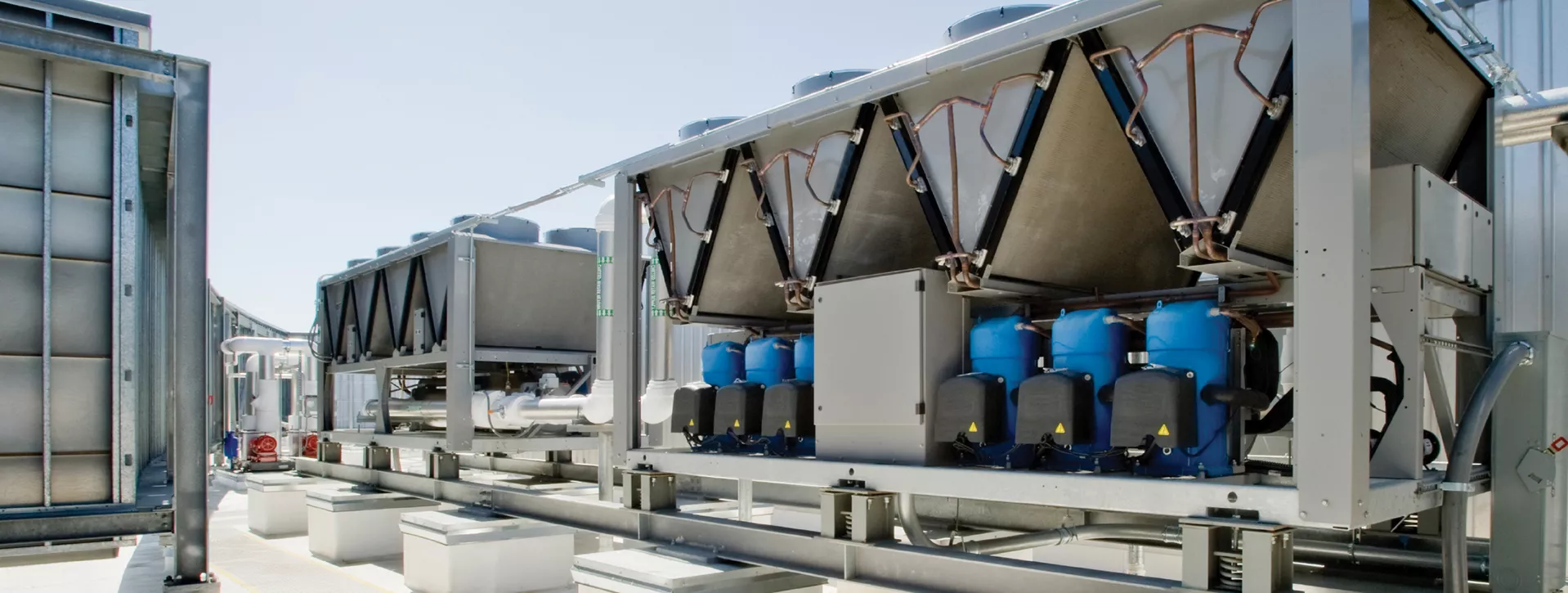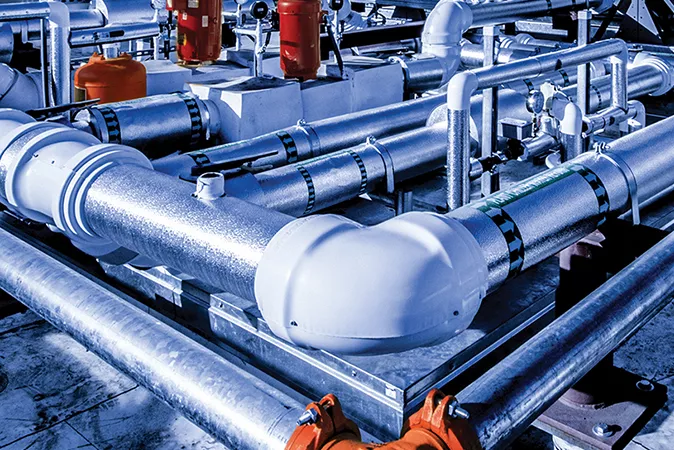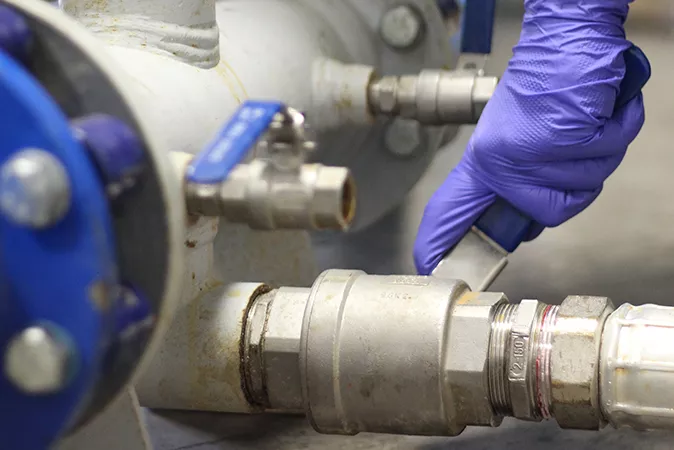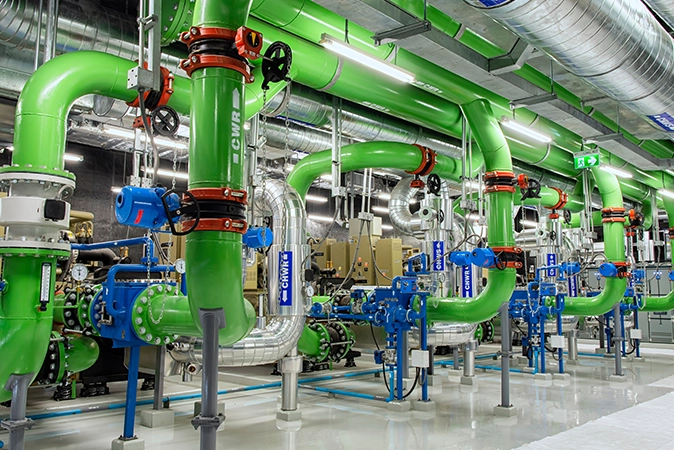Key considerations for the successful management of closed loop cooling systems include:
1. Pre-commission cleaning and initial treatment
Thorough Cleaning: A pre-commissioning or remedial clean is essential to ensure any newly fitted or refilled system runs at optimum efficiency. Construction debris, mill scale and other contaminants can reduce system efficiency and cause blockages around valves and heat exchangers. Scale buildup and biological fouling both provide an ideal surface for biofilm formation. Biofilms, in turn, provide a perfect environment for microbiologically influenced corrosion (MIC), creating a cycle that is difficult to eradicate. Purachem products can be used as pre-commissioning flushes or as in-line treatments to prevent and control biological contamination.
Corrosion Inhibitors: After cleaning, treat the system with an appropriate corrosion inhibitor to form a protective layer on the internal surfaces, preventing corrosion and deposit formation. The Sureflow range of corrosion & scale inhibitors can be used to treat new and existing systems, whether they are water-only or contain antifreeze. E.g. water-glycol, water-brine etc.
Hydratech Services Division undertakes a range of office and site-based system maintenance, modification & optimisation services, including pre-commission system cleaning.
2. Water chemistry management
Regular Monitoring: Periodically analyze the system's water chemistry to ensure optimal levels of corrosion inhibitors, biocides, and other treatment chemicals. These checks help maintain water quality and prevent unbudgeted costs. To verify long-term condition of the fluid and system, Hydratech recommend periodic analysis of the heat transfer fluid, in accordance with BSRIA and British Standard BS8552 guidelines. Hydratech’s in-house laboratory carries out analytical fluid testing of hydronic system fluids to identify water contaminates, bacterial presence, water treatment levels or the make-up of elements.
Key Parameters: Monitor pH, conductivity, dissolved oxygen, inhibitor levels (e.g., nitrite, molybdate), and bacterial counts.
Chemical Treatment: Based on water analysis results, adjust chemical dosing to maintain the desired water chemistry. This may include:
Corrosion Inhibitors: To protect metal components from corrosion. Common types include nitrate and molybdate-based inhibitors.
Biocides: To control microbiological growth and prevent biofouling and microbiologically induced corrosion.
Scale Inhibitors: To prevent the formation of scale, particularly if the system uses hard makeup water or operates at high temperatures.
Glycol Degradation: If the system uses glycol, monitor its concentration and condition, especially if the concentration falls below 25%, as it can become a nutrient source for bacteria.
Selecting the correct type of chiller glycol is also very important. The glycol type should already be known and recorded in the commissioning documents or maintenance logs for your systems. Hydratech Services can assist with glycol determination analysis if it is not known – it is especially important to verify this for food or beverage process applications.
3. Filtration
Side Stream Filtration: Install a side-stream filter to continuously remove particulates and suspended solids from the circulating water. This reduces equipment wear, improves heat exchange efficiency, and helps control microbial contaminants.
Filter Selection: Choose a filter type based on the size and type of solids to be removed, system temperature and pressure, and operational considerations. Options include cartridge filters, bag filters, high-performance filters, and sand filters.
Maintenance: Regularly inspect and clean or replace filters as needed.
The Hydratech Services Division specialise in the fabrication, installation and commissioning of Side Stream Filtration Units. HSD also provides a bespoke Engineering, Design & Fabrication solution for all closed loop cooling and heating systems.
4. System integrity and inspections
Visual Inspections: Regularly inspect the system for leaks, corrosion, or any signs of damage to pipes, valves, and other components. Promptly address any issues to prevent escalation.
Pressure and Flow Monitoring: Monitor system pressure and flow rates for fluctuations, which can indicate leaks or other problems.
Pressurization: Ensure the system is properly pressurized to prevent oxygen ingress and maintain inhibitor levels.
Addressing Water Losses: Identify and eliminate the sources of significant water loss, as they introduce impurities and dilute treatment chemicals.
Heat Exchangers: Ensure heat exchangers are clean and free of fouling to maintain optimal heat transfer.
5. Addressing specific problems
Scale Buildup: If scale accumulation is a concern, consider an on-line descaling product to gradually remove deposits while the system operates.
High Copper Levels: If tests reveal high copper levels, adding an azole-based inhibitor can help protect copper surfaces.
Foaming: Foaming, while less common, can be addressed by adding low doses of specialized antifoaming agents.
Biofilm: If biofilm buildup is present, dosing a biocide with a compatible biodispersant can help remove it. However, ensure the system has adequate filtration to prevent blockages from dislodged biofilm.
By implementing these practices, you can effectively maintain your closed loop cooling system, ensuring its long-term efficiency and reliability.
We’re here to help
Since 1998, Hydratech have specialized in the formulation and manufacture of thermal fluids, inhibitors and cleansing & conditioning chemicals - for use in commercial and industrial closed loop cooling and heating systems.
Utilising over 100 years combined experience in all aspects of cooling and heating applications, Hydratech's team of chemical, mechanical and sales engineers are ready to provide expert advice on fluid selection and application.
Hydratech Services Division (HSD)
The HSD division specialise in improving the thermodynamic and energy efficiency of large commercial cooling and heating systems. Via M&V energy audits, HSD can highlight performance gaps between design specification and actual operating load. Using hydronic software and computer modelling, HSD can implement thermal fluid, equipment and BMS upgrades to improve efficiency by >15%.
The cornerstone of HSD support activities is the Fluid Monitoring Program (FMP). Via a straightforward and cost-effective process, the FMP provides customers with a detailed analysis and report of their thermal fluid condition, including Key Observations and Key Recommendations.


















